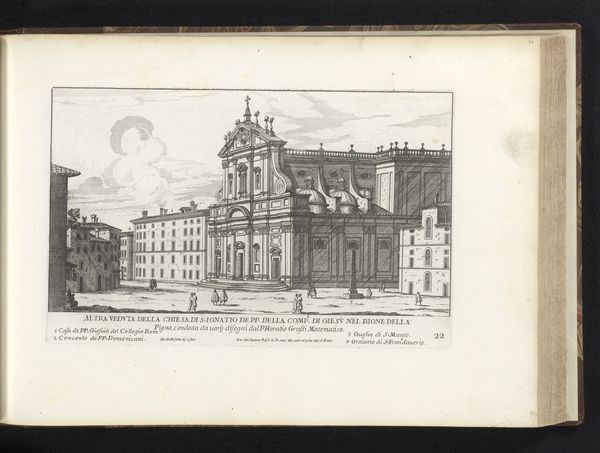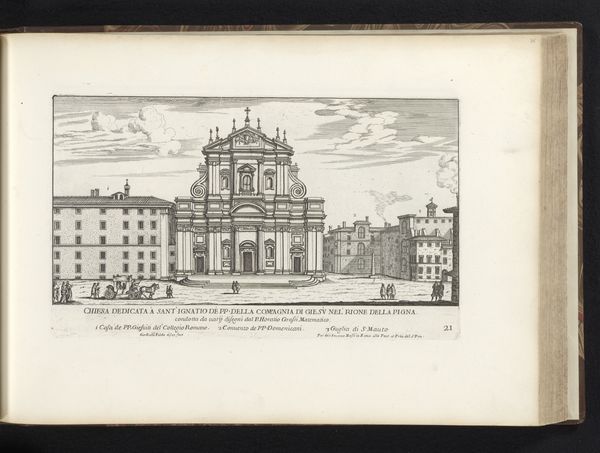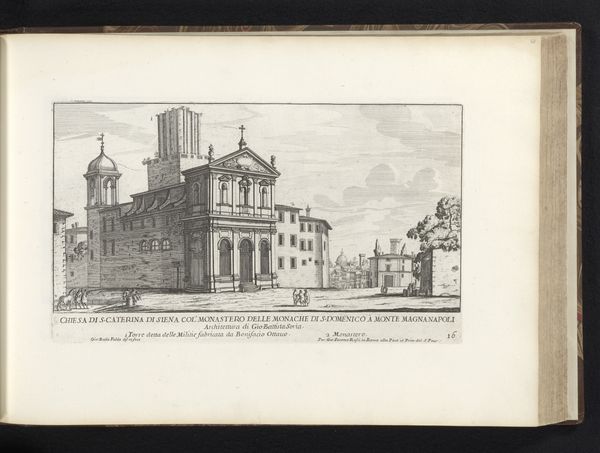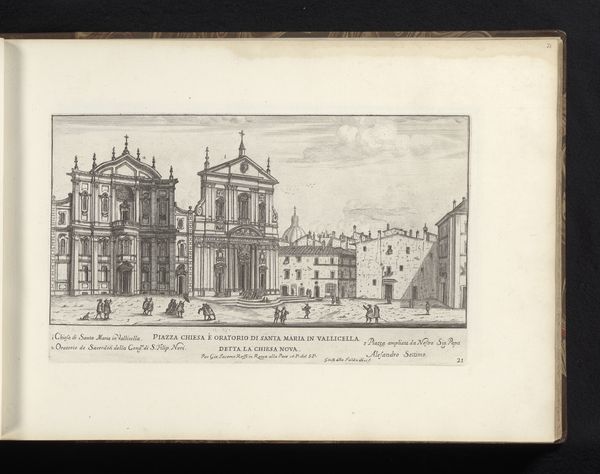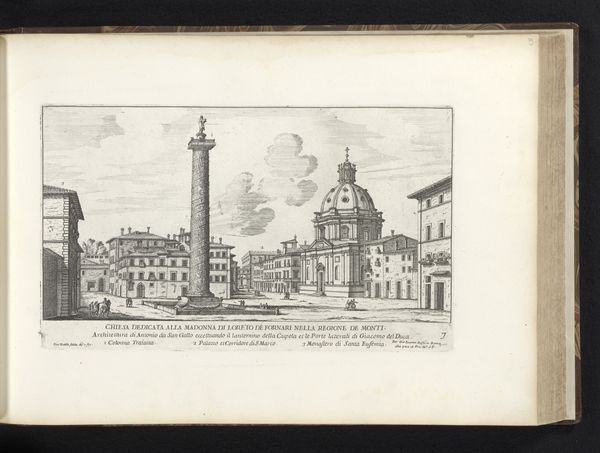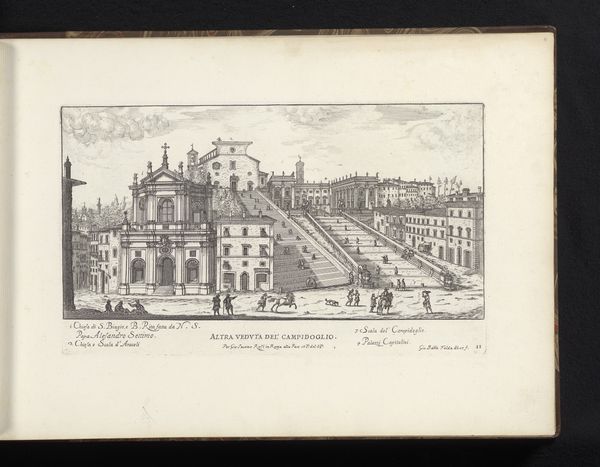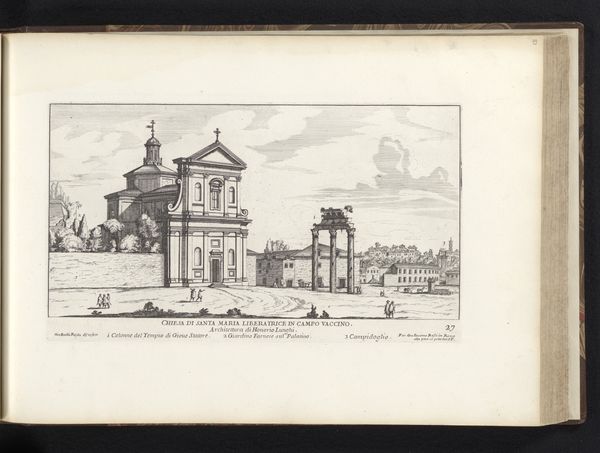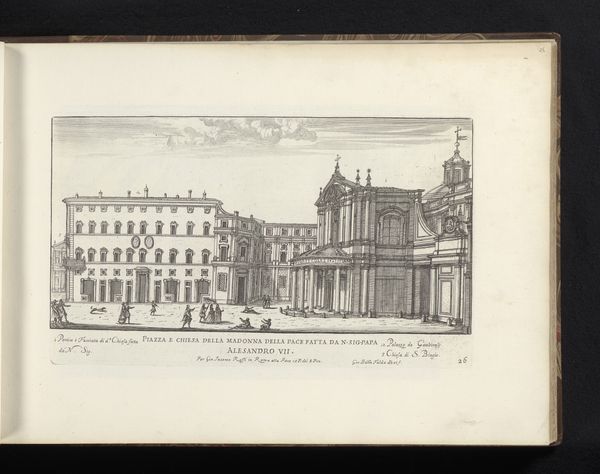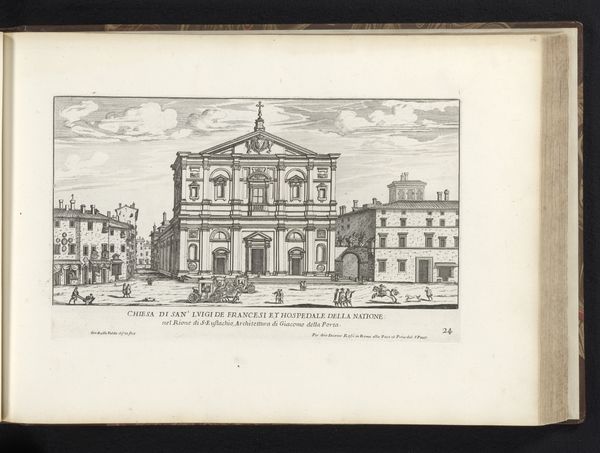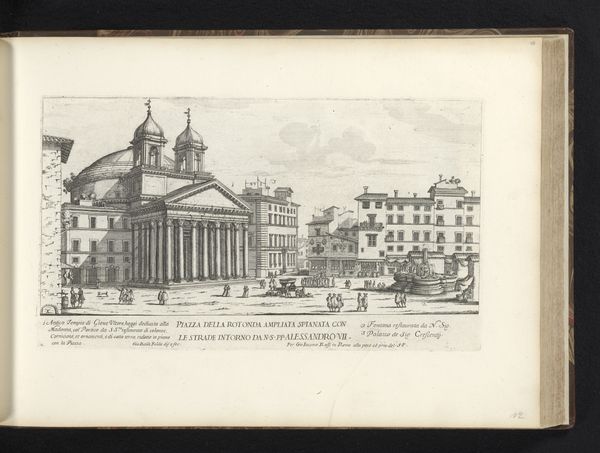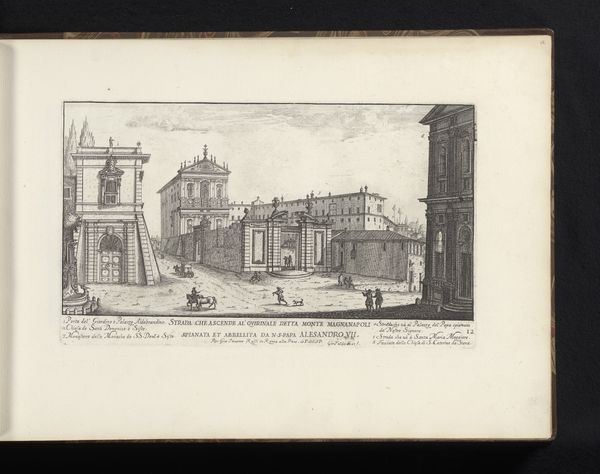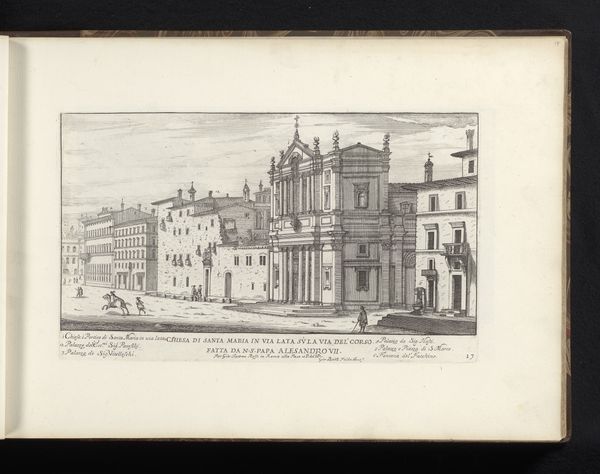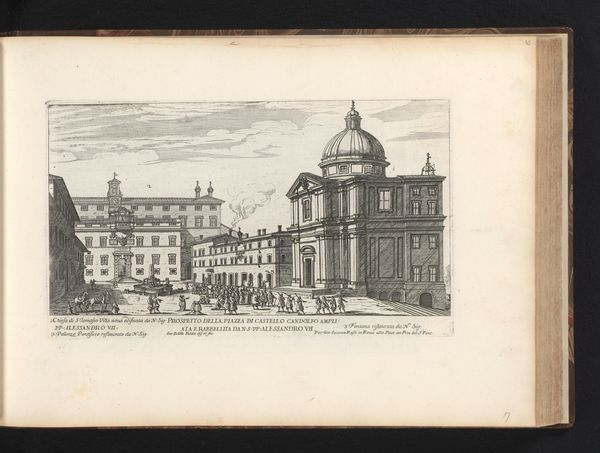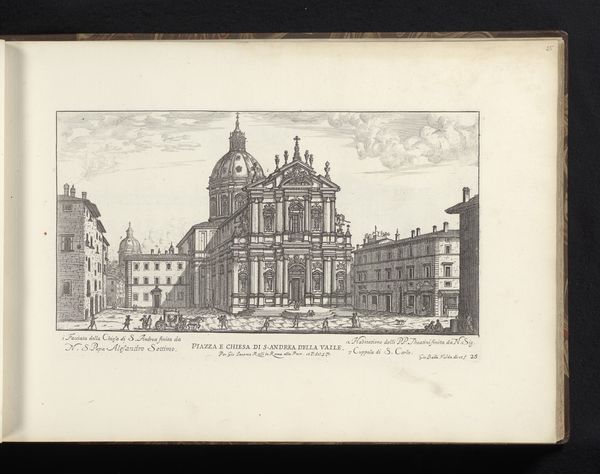
drawing, print, etching, intaglio, engraving, architecture
#
drawing
#
baroque
# print
#
etching
#
intaglio
#
line
#
cityscape
#
engraving
#
architecture
Dimensions: height 173 mm, width 292 mm
Copyright: Rijks Museum: Open Domain
Editor: So, here we have "Il Gesù te Rome" by Giovanni Battista Falda, created around 1669-1670. It’s an etching, an intaglio print showcasing a cityscape dominated by a grand church. The precision of the lines makes me wonder about the production process. What grabs your attention in this piece? Curator: The meticulous detail allows us to examine the socio-economic forces at play. Consider the materials: the paper, the ink, the metal plate used for the etching. Each element represents resources extracted, processed, and distributed through specific labor systems. Who benefitted from creating and disseminating these prints? Editor: That's a perspective I hadn’t considered. I was focused on the aesthetic, the Baroque style and the sheer skill involved in creating such a detailed cityscape. Are you suggesting the materials used can speak to something deeper? Curator: Absolutely! The Baroque, after all, was a style favored by the elite. This print makes the architecture accessible to a wider audience. We might ask, then, what kind of patronage was Falda under? These prints would have been circulated amongst merchants, clergy, and landowners. Were these commodities symbols of cultural power, sold and consumed like any other object? Editor: It's interesting to consider how an artwork functions as both a creative and a commercial object. Curator: Exactly. Even the *lines* themselves become part of the material equation: consider the skilled labor involved in their production. What kind of training went into producing such consistency of technique? Editor: It’s quite a change of perspective, to think about the cost of labor and materials in a work like this rather than the artistic inspiration alone. I'll definitely be looking at art with a more critical eye toward its production now. Curator: Good, because we can really examine this period’s visual culture and understand its ties to larger networks of production, commerce, and consumption by considering these things.
Comments
No comments
Be the first to comment and join the conversation on the ultimate creative platform.
